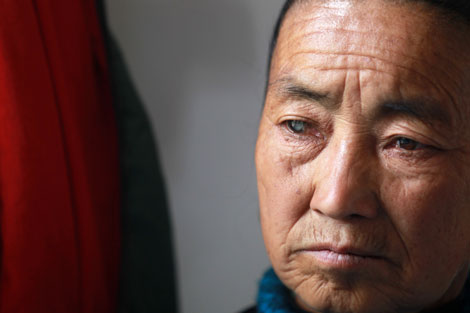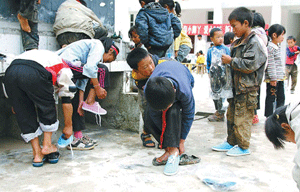Solar cell spotlight on ministry
Updated: 2011-11-21 07:58
By Du Juan and Ding Qingfen (China Daily)
|
|||||||||
Domestic manufacturers claim foreign companies are subsidized
SHENZHEN - The Ministry of Commerce will be asked, by domestic manufacturers, to launch a dumping and subsidy investigation into sales of US solar cells in China.
Gao Hongling, deputy secretary-general of the China Photovoltaic Industry Alliance, told China Daily on Sunday that the alliance is finalizing a complaint alleging that US manufacturers are selling their products at prices below cost in China.
"The report will be sent to the Ministry of Commerce soon," she said.
Gao added that the alliance is also preparing another petition for the ministry regarding an investigation into subsidies allegedly received by US manufacturers.
The ministry declined to make any comment on the issue on Sunday.
The move is apparently in response to the US anti-dumping investigation into the export practices of Chinese solar cell manufacturers.
SolarWorld AG, and several other US-based solar cell companies, filed a petition in October with the US Department of Commerce and the International Trade Commission, alleging that Chinese companies sold solar panels below cost in the US market.
The complaint identifies 200 subsidies that the government allegedly provides to the solar industry - including cut-rate raw materials such as aluminum and polysilicon, tax exemptions, massive below-market loans and discounts on land, power and water.
The US Department of Commerce and the International Trade Commission officially opened the year-long investigation in November.
Polysilicon is a vital component of solar cells and Gao believes that foreign companies have slashed prices of this key product to force Chinese companies out of business.
"Foreign companies lowered polysilicon prices greatly in recent years and this has forced many Chinese polysilicon producers to go bankrupt," she said.
According to the alliance, many Chinese polysilicon factories stopped or reduced production in the third quarter and more than 2,000 people in the industry lost their jobs in one province alone.
Foreign countries, led by the United States, dumped 47,500 tons of polysilicon in China in 2010, 20,000 tons more than the previous year, according to statistics from the alliance.
She estimated that sales of polysilicon in the Chinese market will reach 60,000 tons this year.
In August, China imported 6,473 tons of polysilicon and in September 6,489 tons, a monthly record high in recent years.
Meanwhile, US solar companies are receiving large subsidies from the US government, Gao claimed.
Hemlock Semiconductor Group, a US-based polysilicon company, got about $169 million in subsidies in 2010 and Renewable Energy Corporation got $155 million in subsidies for polysilicon production, she claimed.
"These companies took advantage of the subsidies to lower prices in China, which seriously damaged the Chinese polysilicon industry," she said.
An industry insider, surnamed Hu, in East China's Jiangsu province, where most domestic solar companies are located, said the international price of polysilicon has been falling in recent months and US costs are usually lower than those faced by domestic producers.
"US polysilicon producers have advanced technology, complete production lines and large-scale operations, which can help them reduce costs," he said.
"They have a longer history and better technology of polysilicon production than most Chinese companies."
Another analyst, surnamed Li, who has worked in the solar industry in the country for more than 15 years, said the Ministry of Commerce has to prove that US companies' prices are below their own production costs.
"Otherwise, it is normal business competition instead of illegal dumping and US companies are generally more competitive than domestic companies in global market," he said.
"To protect our own industry, we, of course, hope that the ministry can start the investigation soon," Li said.
"We need to collect enough evidence and it is not a simple task."
China Daily
(China Daily 11/21/2011 page1)











